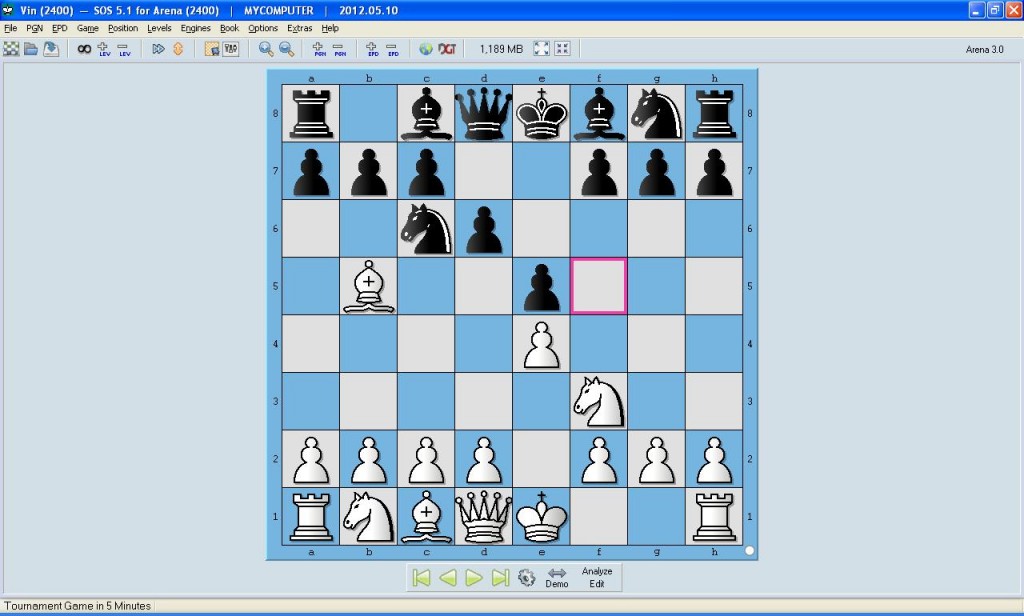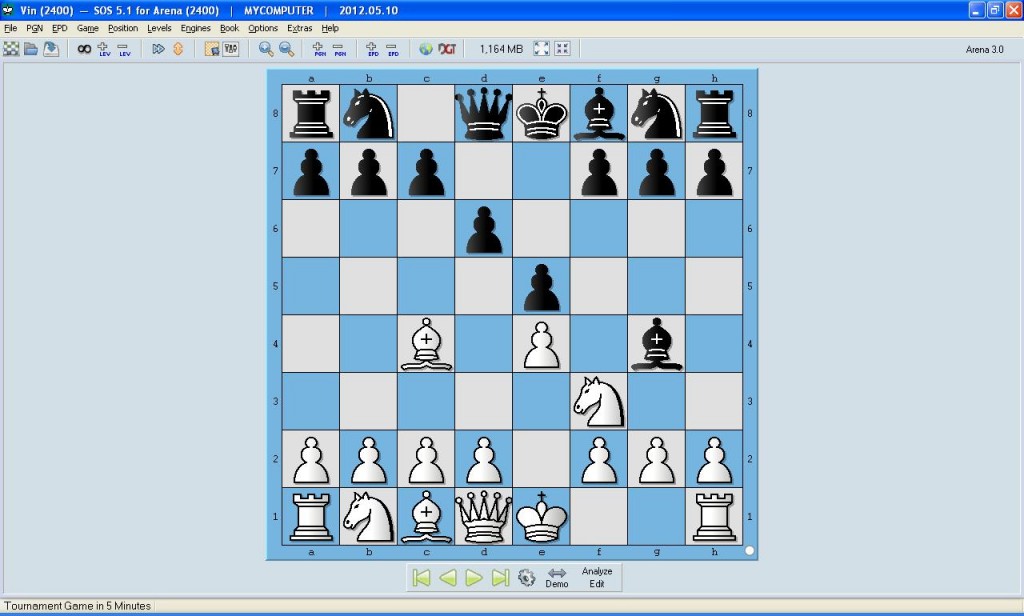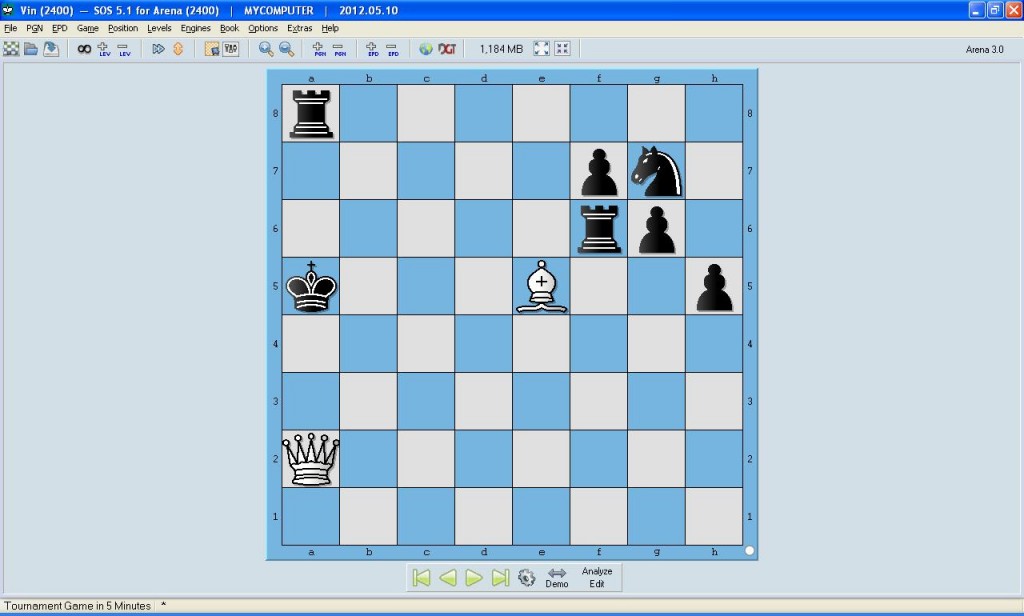If you’ve read my previous post, then you know that studying tactics is one of the most important things you can do to improve your game. In this series, I’m going to go deeper, define, and give examples of some basic tactics. Before we get into the fun stuff, let me first give some required definitions.
In chess tactics can be defined as short term opportunities where one player makes threats against the opponent. Pins and skewers, are just two examples of various tactics that are used in a chess game. A pin in chess is when you attack a piece that can not move out the way because it would allow capture of a piece of greater value. There are two types of pins, absolute pins and relative pins. Let’s look at some examples.
This first diagram is an example of an absolute pin. The black knight on c6 is absolutely pinned to the king because the knight cannot move. In chess, it is illegal to move a piece and expose your king to check. Keep in mind that absolute pins are more powerful than relative pins for this very reason, the piece that is pinned is completely stuck!
The next diagram is an example of a relative pin. The knight on f3 is pinned to the queen. Unlike the first example, it is possible for the knight on f3 to legally move. Doing so however would be bad since it would lose the queen which is more valuable than the knight.
One thing to remember is that only queens, rooks, and bishops can pin other pieces.
The next tactic we will discuss is the skewer. A skewer is very similar to a pin, however in the case of a skewer the more valuable piece is in front of the piece of equal or lesser value. When the more valuable piece moves, it exposes the less valuable piece to capture. Just like pins there are absolute skewers and relative skewers. Let’s look at some examples.
The following diagram shows an example of two skewers. The white queen is skewering the black king on a5 and black rook on a8. Since the black king is in check it must move out of the way allowing the capture of the rook. Also, the white bishop is skewering the black rook on f6 and the black knight on g7. Since the rook is more valuable than the knight, when it moves it allows capture of the knight. Just like pins, only the straight line pieces, queens, bishops, and rooks can skewer.
I hope this post helped you get your feet wet with some basic tactics! In the next post in this series we will discuss double attacks. In the meantime start improving your tactics play by solving some chess puzzles!




It’s very nice tips on chess basic. I like these tips and i learnt something new from this blog. Nice blog and keep sharing your ideas!